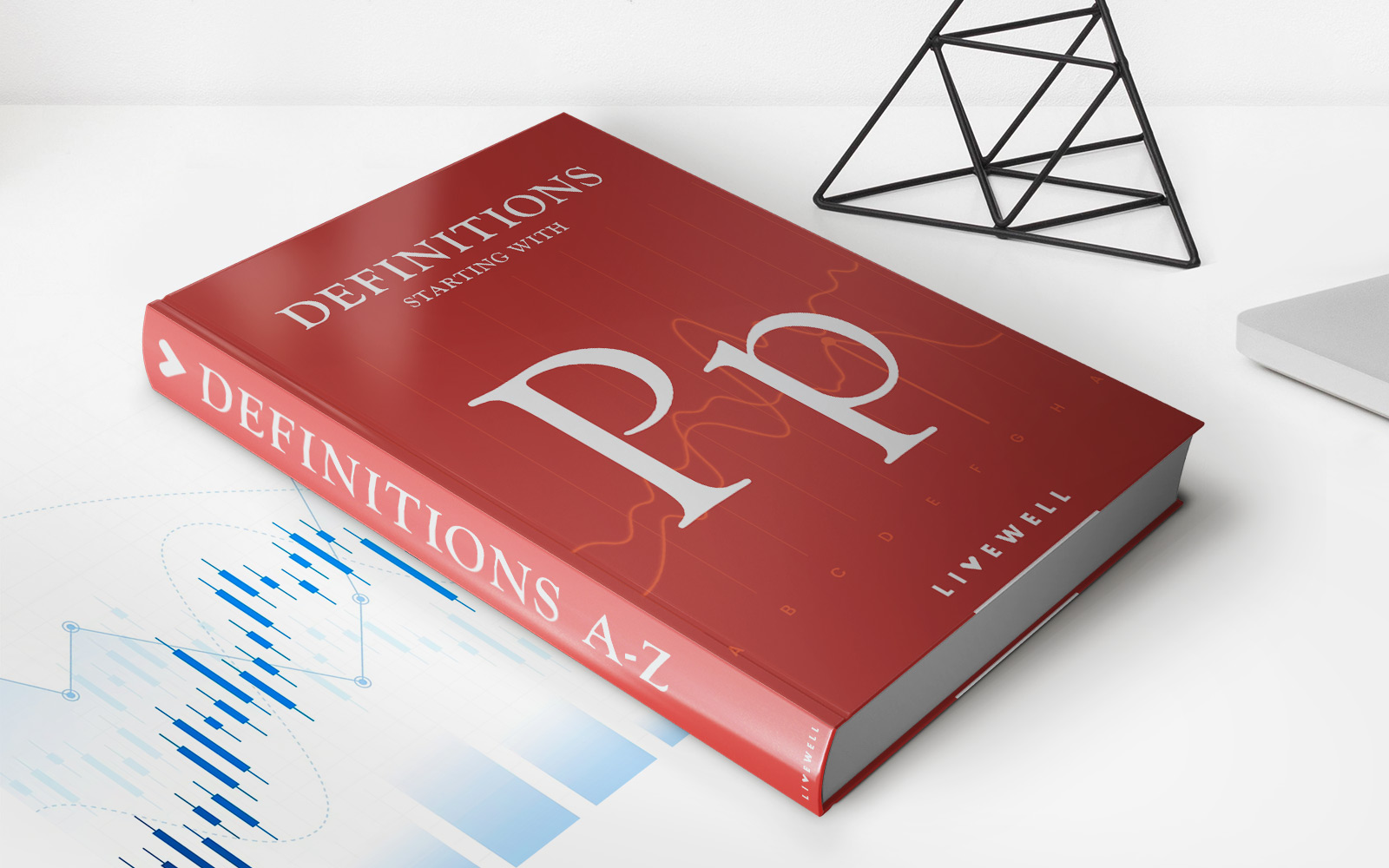

Finance
What Does Life Insurance Not Cover?
Modified: February 21, 2024
Curious about what life insurance doesn't cover? Get insights on financial limitations and ensure you have all the information you need.
(Many of the links in this article redirect to a specific reviewed product. Your purchase of these products through affiliate links helps to generate commission for LiveWell, at no extra cost. Learn more)
Table of Contents
- Introduction
- Health conditions not covered by life insurance
- Suicidal death
- Death due to drug or alcohol overdose
- Act of war or terrorism
- Death during participation in high-risk activities
- Death resulting from illegal activities
- Death during the contesting period
- Non-disclosure of pre-existing conditions
- Natural disasters and accidents
- Conclusion
Introduction
Life insurance is a crucial financial tool that provides a safety net for your loved ones in the event of your untimely demise. It offers peace of mind knowing that your family will be protected and financially secure even after you’re gone. However, it’s important to understand that life insurance does not cover every possible scenario. There are certain exclusions and limitations that you should be aware of to make informed decisions about your coverage.
In this article, we will explore the various situations and events that are typically not covered by life insurance policies. It’s essential to understand these exclusions to ensure that you have a comprehensive understanding of your coverage and to avoid any unexpected surprises in the future.
While life insurance policies vary from one provider to another, there are several common occurrences that are generally not covered. It’s crucial to thoroughly review your policy and consult with your insurance provider to get a clear understanding of what is and isn’t covered in your specific policy.
Let’s dive deeper into the details of what life insurance typically does not cover.
Health conditions not covered by life insurance
When applying for life insurance, your current and past health conditions play a significant role in determining your premiums and coverage. However, there are certain health conditions that are generally not covered or may result in limited coverage. It’s crucial to understand these exclusions to make informed decisions about your life insurance needs.
Conditions such as cancer, heart disease, diabetes, and other chronic illnesses may lead to limited coverage or higher premiums, depending on the severity and stage of the condition. Insurance providers typically assess your risk level based on your health history, including any pre-existing conditions.
In some cases, insurance companies may decline coverage altogether if you have certain terminal illnesses or if you’re currently undergoing treatment for a life-threatening condition.
Additionally, if you fail to disclose any known health conditions during the application process, it could lead to coverage denial or cancellation in the future. It’s crucial to provide accurate and honest information about your health to avoid any complications down the line.
It’s worth noting that some insurance providers offer policies specifically designed for individuals with pre-existing conditions. These policies may have certain limitations and higher premiums, but they provide coverage tailored to your specific needs.
If you have concerns about your health conditions and their impact on your life insurance coverage, it’s advisable to consult with an insurance professional who can guide you through the process and help you find suitable coverage options.
Remember, each insurance provider has its own set of guidelines and underwriting criteria, so it’s essential to thoroughly review your policy and understand the specific exclusions and coverage limitations related to your health conditions.
Next, let’s explore another common scenario that is generally not covered by life insurance: suicidal death.
Suicidal death
One of the exclusions commonly found in life insurance policies is coverage for suicidal death. In most cases, life insurance policies have a suicide clause, which means that if the policyholder dies by suicide within a specified period, typically within the first two years of the policy, the death benefit may not be paid out to the beneficiaries.
The suicide clause is implemented to prevent individuals from taking out a life insurance policy with the intention of committing suicide shortly after, in order to provide financial support for their loved ones. It helps insurance companies manage the risk associated with suicide and maintain the integrity of the life insurance industry.
However, it’s important to note that after the suicide clause period has passed, typically two years, the policy usually covers death by suicide. It’s crucial to carefully review your policy and understand the specific terms and conditions related to suicide coverage.
In some cases, even after the suicide clause period, the policy may only provide a partial payout for suicide-related deaths. For example, the policy may refund the premiums paid to the beneficiaries, but not the full death benefit amount. This varies depending on the insurance provider and the policy terms.
If you or someone you know is struggling with mental health issues or has had suicidal thoughts in the past, it’s crucial to seek help and support. Life insurance is an essential financial tool, but it’s not a substitute for mental health care and professional assistance.
If you have concerns about suicide coverage in your life insurance policy or need assistance with mental health resources, it’s advisable to contact your insurance provider or reach out to mental health support organizations for guidance.
Now, let’s move on to the next scenario that is generally excluded from life insurance coverage: death due to drug or alcohol overdose.
Death due to drug or alcohol overdose
Life insurance policies typically exclude coverage for deaths resulting from drug or alcohol overdoses. This exclusion is in place because these deaths are considered avoidable and are often linked to substance abuse issues.
Insurance providers view deaths due to drug or alcohol overdose as a high-risk behavior that the policyholder engages in willingly. Therefore, the policyholder is responsible for their actions and the consequences that arise from them.
Excluding coverage for deaths caused by drug or alcohol overdose helps insurance companies manage risk and maintain the financial integrity of the industry. It prevents individuals from seeking life insurance coverage with the intention of intentionally harming themselves through substance abuse.
It’s important to note that the specifics of this exclusion may vary between insurance providers and policies. Some policies may deny coverage for any overdose-related death, while others may have specific limitations or waiting periods. It’s essential to carefully review your policy to understand the coverage and exclusions related to drug or alcohol-related deaths.
If you or someone you know struggles with substance abuse, it’s crucial to seek professional help and support. Life insurance is designed to protect your loved ones in the event of your death, but it’s not a solution for addressing underlying health issues.
If you have concerns about substance abuse exclusions in your life insurance policy or need assistance with resources for addiction recovery, consider reaching out to your insurance provider or seeking support from addiction recovery organizations.
Next, let’s explore another common exclusion: death caused by acts of war or terrorism.
Act of war or terrorism
Life insurance policies typically exclude coverage for deaths resulting from acts of war or terrorism. This exclusion is in place because these events are considered exceptional circumstances that are beyond the control of individuals and insurance providers.
Acts of war or terrorism can result in large-scale destruction and loss of life. Insurance companies are not able to accurately assess the risk and potential financial impact of such events on their policyholders, making it difficult to provide comprehensive coverage for deaths caused by acts of war or terrorism.
Furthermore, these events are typically covered by government programs or special insurance schemes specifically designed to offer assistance and compensation to individuals affected by acts of war or terrorism.
It’s important to note that the term “acts of war” can vary in its interpretation, and insurance policies may define it differently. In some cases, it may refer to declared wars between nations, while in other instances, it may include acts of terrorism or civil unrest that are considered war-like in nature.
Individuals who are at a higher risk of being involved in acts of war, such as military personnel or individuals working in conflict zones, may have access to specialized insurance options or benefits provided by their employers or relevant government agencies.
If you have concerns about the coverage related to acts of war or terrorism in your life insurance policy, it’s crucial to carefully review the policy terms and consult with your insurance provider. They can provide you with specific information about the exclusions and limitations related to these events.
Now, let’s move on to the next scenario that is generally not covered by life insurance: death during participation in high-risk activities.
Death during participation in high-risk activities
Life insurance policies often have exclusions when it comes to deaths that occur during participation in high-risk activities. These activities typically involve a higher level of danger and an increased likelihood of accidents or fatal incidents.
High-risk activities can include extreme sports such as skydiving, bungee jumping, rock climbing, and motor racing, among others. Engaging in these activities presents a greater risk to the individuals involved, and insurance providers may exclude coverage for deaths that occur as a result of these activities.
The reasoning behind this exclusion is to mitigate the risks associated with these activities. Insurance companies assess the potential hazards and the increased likelihood of accidents, which can result in substantial financial liabilities for the company if they were to provide coverage for such incidents.
If you engage in high-risk activities and want to have coverage for potential accidents or fatalities, you may need to seek specialized insurance policies that specifically cater to these activities. These policies typically come with higher premiums and specific terms and conditions tailored to the associated risks.
It’s important to note that the definition of high-risk activities can vary between insurance providers, and some policies may have a broader scope, covering a wider range of activities, while others may be more specific and limit coverage to certain sports or activities.
If you participate in high-risk activities and have concerns about your life insurance coverage, it’s essential to carefully review the policy terms and consult with your insurance provider regarding any potential exclusions or limitations related to your specific activities.
Next, let’s explore another common scenario that is generally excluded from life insurance coverage: death resulting from illegal activities.
Death resulting from illegal activities
Life insurance policies typically exclude coverage for deaths resulting from illegal activities. Engaging in illegal activities increases the risk of harm or death, and insurance providers do not want to provide financial protection for actions that are against the law.
Illegal activities can range from criminal acts such as drug trafficking and robbery to participation in organized crime or acts of violence. Insurance companies have a responsibility to manage risk and ensure that their policies do not incentivize or support unlawful behavior.
If a policyholder dies as a result of engaging in illegal activities, the insurance provider may deny the death benefit claim, even if the events leading to the death were accidental or unintentional. It is important to note that intentional wrongful acts or illegal activities can void the policy altogether.
However, it’s worth mentioning that deaths resulting from illegal activities can be complex, and each case may be evaluated on its own merits. The insurance provider will review the situation carefully to determine whether the death is directly linked to the illegal activity and whether any exceptions or special circumstances apply.
If you have concerns about the coverage related to deaths resulting from illegal activities in your life insurance policy, it’s essential to carefully review the policy terms and consult with your insurance provider. They can provide you with specific information on the exclusions and limitations related to these activities.
It’s crucial to remember that engaging in illegal activities comes with extensive legal consequences and risks, aside from the potential impact on your life insurance coverage. It is always in your best interest to abide by the law and prioritize your personal and financial well-being.
Now, let’s move on to the next scenario that is generally not covered by life insurance: death during the contesting period.
Death during the contesting period
The contesting period is a specific timeframe that typically occurs within the first two years of a life insurance policy. During this period, the insurance company has the right to investigate and contest the validity of the policy based on the information provided by the policyholder.
If the policyholder passes away during the contesting period, the insurance company may conduct a thorough review of the policy application, medical history, and other relevant information. The purpose of this investigation is to ensure that the policyholder provided accurate and honest information during the application process.
If it is discovered that the policyholder made material misrepresentations or concealed important information about their health, lifestyle, or other relevant factors, the insurance company may deny the death benefit claim and cancel the policy. This is done to maintain the fairness and integrity of the life insurance system and prevent individuals from obtaining coverage through fraudulent means.
It’s important to note that the specific duration of the contesting period can vary between insurance companies and policies. It is typically stated in the insurance policy document, and it is crucial to understand and be aware of this period when purchasing a life insurance policy.
Once the contesting period has ended, typically after two years, the insurance company generally cannot contest the policy based on any misrepresentations made by the policyholder.
During the contesting period, it is critical to be honest and provide accurate information during the application process. Failing to disclose relevant details or providing misleading information can lead to the denial of a death benefit claim and the cancellation of the policy.
If you have concerns about the contesting period and the impact it may have on your life insurance coverage, it’s advisable to carefully review your policy terms and consult with your insurance provider. They can provide you with specific information about the contestability period and clarify any questions or concerns you may have.
Next, let’s explore another common scenario that is generally not covered by life insurance: non-disclosure of pre-existing conditions.
Non-disclosure of pre-existing conditions
When applying for life insurance, it is crucial to disclose all pre-existing conditions truthfully and accurately. Failing to disclose relevant information about your health history can have serious consequences for your coverage and potential claims.
Pre-existing conditions refer to any medical conditions or illnesses that you have been diagnosed with or have received treatment for before applying for life insurance. These can include chronic illnesses, heart conditions, cancer, diabetes, and other significant health issues.
Insurance companies assess the risk associated with pre-existing conditions when determining premiums and coverage. If you omit or intentionally conceal information about your pre-existing conditions, it can lead to the denial of a future death benefit claim.
It’s important to remember that insurance providers have access to various databases and resources to verify the information provided by applicants. If they discover that you withheld or misrepresented information about your health history, they have the right to contest the policy and deny any claims.
However, it’s worth noting that not all pre-existing conditions automatically disqualify an individual from obtaining life insurance coverage. Many insurance companies offer policies that cater specifically to individuals with pre-existing conditions. These policies may have certain limitations, waiting periods, or higher premiums, but they provide coverage tailored to your unique circumstances.
Disclosing your pre-existing conditions truthfully during the application process ensures that your coverage accurately reflects your health status. It also helps insurance providers determine the appropriate premiums and coverage, avoiding any potential disputes or claim denials in the future.
If you have concerns about pre-existing conditions and their impact on your life insurance coverage, it’s advisable to consult with an insurance professional who can guide you through the application process and help you find suitable coverage options.
Remember, it is always better to be upfront and transparent about your health history when applying for life insurance to ensure fair and reliable coverage.
Now, let’s move on to the next scenario that is generally not covered by life insurance: death resulting from natural disasters and accidents.
Natural disasters and accidents
Life insurance typically does not cover deaths resulting from natural disasters and accidents. These events are often considered unpredictable and beyond the control of the insured individual or the insurance provider.
Natural disasters such as earthquakes, hurricanes, floods, and wildfires can cause widespread destruction and loss of life. Insurance companies are not equipped to accurately assess the risks associated with these events on an individual basis. As a result, they generally exclude coverage for deaths caused by natural disasters.
Similarly, accidents such as car crashes, workplace incidents, or accidental falls are often excluded from life insurance coverage. Insurance providers may view accidents as random occurrences that are difficult to predict and adequately assess in terms of potential financial impact.
It’s important to note that if you are seeking coverage specifically for accidents, there are insurance policies available, such as accidental death and dismemberment (AD&D) insurance, which provide benefits in the event of accidental death or severe injury.
It’s crucial to read and understand your life insurance policy to determine the specific exclusions and limitations related to natural disasters and accidents. Some policies may offer optional riders or additional coverage that can be added to provide protection in these situations.
In instances of natural disasters or accidents, it’s also important to check if you have any separate insurance policies in place that provide coverage for these specific events, such as homeowners’ insurance, renters’ insurance, or auto insurance.
While life insurance may not cover deaths resulting from natural disasters and accidents, it’s still a valuable financial tool for providing financial support and protection to your loved ones in other circumstances, such as illness, injury, or natural causes.
If you have concerns about natural disaster or accident coverage in your life insurance policy or if you need additional coverage for these events, it’s advised to consult with your insurance provider or seek guidance from an insurance professional who can help assess your needs and provide appropriate recommendations.
Finally, let’s conclude our exploration of situations typically not covered by life insurance.
Conclusion
Life insurance is a valuable financial tool that provides peace of mind and financial protection for your loved ones in the event of your death. However, it’s important to be aware of the limitations and exclusions associated with life insurance coverage.
While life insurance policies vary, there are several common scenarios that are typically not covered. These include health conditions, suicidal death, death due to drug or alcohol overdose, acts of war or terrorism, death during participation in high-risk activities, death resulting from illegal activities, death during the contesting period, and non-disclosure of pre-existing conditions. Natural disasters and accidents are also generally excluded from coverage.
Understanding these exclusions is crucial when assessing your life insurance needs and making informed decisions about the coverage you require. It’s important to thoroughly review your policy, consult with your insurance provider, and seek guidance from insurance professionals to ensure that you have a comprehensive understanding of your coverage.
While some exclusions may seem disheartening, the purpose behind them is to manage risk, maintain the financial integrity of the insurance industry, and prevent fraudulent claims or misuse of policies.
Remember, life insurance is an essential tool, but it is not a substitute for addressing other areas of concern in your financial plan. It’s important to prioritize your health, safety, and well-being beyond the scope of what life insurance can cover.
By being transparent, providing accurate information, and understanding the exclusions and limitations of your life insurance policy, you can ensure that you have appropriate coverage that meets your needs and offers valuable protection for your loved ones.
Ultimately, life insurance serves as a meaningful way to provide financial security and support for your family and dependents, offering peace of mind during difficult times. Take the necessary steps to educate yourself about the details of your policy and make informed decisions that align with your unique circumstances and priorities.














